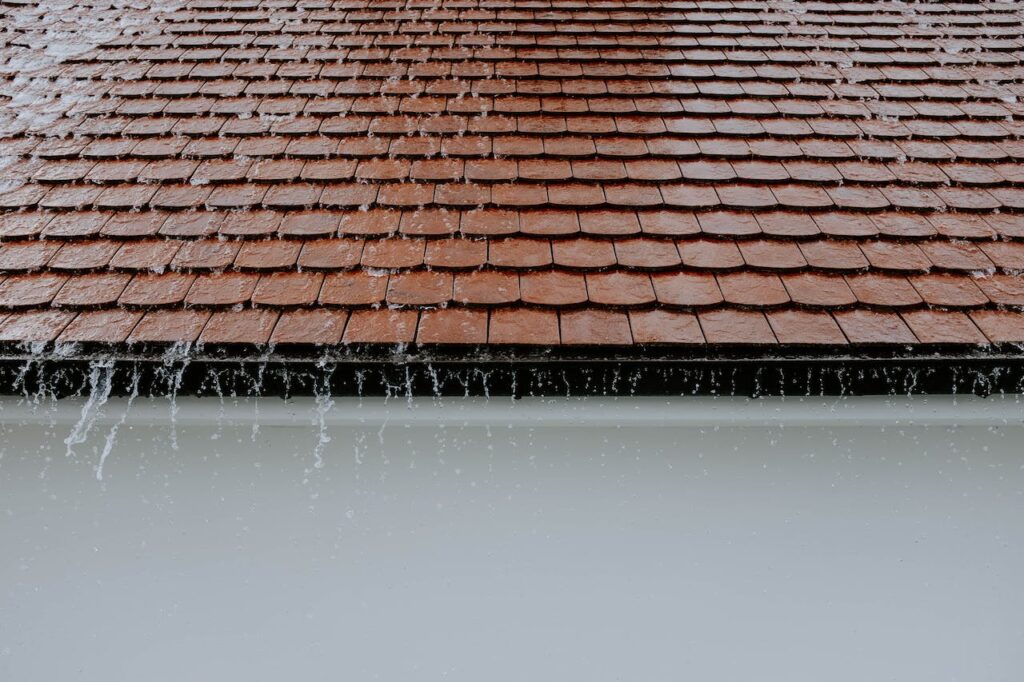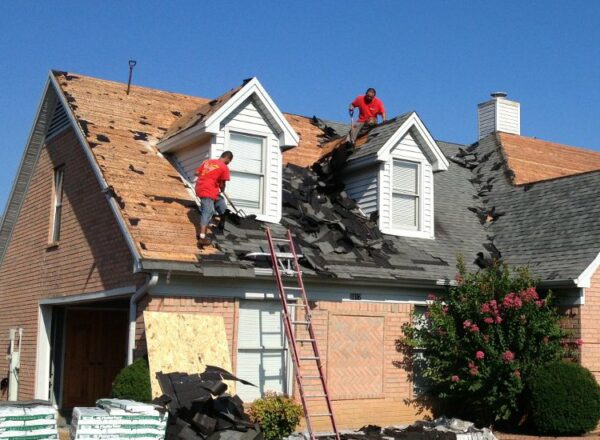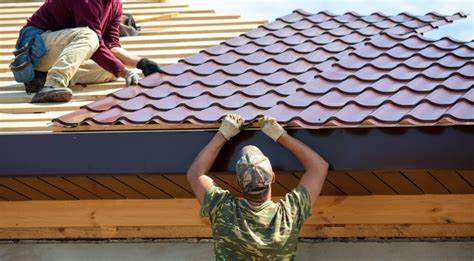Roofing is an essential component of any building, providing critical protection from the elements. A proper roofing system is vital for maintaining structural integrity and interior comfort. In this blog, we’ll explore the history of roofing, examine common materials used today, and provide tips on choosing the right roof for your needs.
Keep reading to learn about all things roofing!
Roofing Through the Decades
Roofs have been an essential element of buildings and shelters across all eras of human history. The materials, styles, and construction techniques used for roofing have evolved over time in tandem with innovation in materials, technology, architectural trends, and building needs.
Ancient Roofing
Some of the earliest primitive roofing emerged in prehistoric times when humans constructed basic shelters from sticks, leaves, grass, and sod. Thatched roofs were the predominant early roofing technique in many cultures around the world. Thatch was made water-resistant by packing and layering the organic materials.
In ancient Egypt, flat roofs built with mud and reeds were popular. Ancient China also saw roofs made from tightly woven straw. The ancient Greeks and Romans had more advanced roofing capabilities using materials like clay, slate, marble, and tile. Slate roof shingles were common in ancient Rome and became more widespread in medieval Europe.
Middle Ages & Renaissance Roofing

In Europe during the Middle Ages, steeply pitched roofs covered with wooden shingles, slate, or straw thatch were commonplace. Woodshake roofing gained popularity in northern Europe where natural wood was abundant.
Clay tile roofing first became prevalent during the Renaissance across Europe. Tile roofs adorned elaborate cathedrals, palaces, and public buildings in this era. Metals like lead and copper were also used for accenting roof details and covering domes, spires, and towers.
Colonial Era Roofing
In early American colonies and log cabins, wood shake, and shingle roofs were frequently used due to the abundant forests. Slate roofing was imported for some estates but was less common due to higher costs.
Thatch roofs remained in use in rural areas of Europe and America. But thatch required thick layers for waterproofing, making such roofs heavy, combustible, and high maintenance.
Industrial Revolution Roofing
The industrial revolution brought about more affordable roofing materials that could be mass produced. The development of galvanized steel, terneplate, corrugated metal sheets, and asphalt composites expanded options beyond traditional wood and slate.
Slate remained popular for high-end architecture. But cheaper asphalt shingles gained widespread adoption in America and Canada for residential re-roofing and new construction.
Modern Roofing

Roofing technology accelerated in the 20th century with the invention of asbestos-cement shingles, bitumen membranes, fiberglass mats, PVC membranes, and advanced synthetic underlayments.
Today, eco-friendly solar shingles, recycled plastic-composite shingles, cool roof coatings, single-ply membranes, and green roofing systems represent the cutting edge in modern sustainable roofing. While materials have evolved drastically, proper installation fundamentals remain critical for roof performance.
The roofing craft has progressed immensely while still honoring core construction principles passed down through the ages. Both ancient and modern roofing techniques share the goal of protecting structures from the elements to create functional human shelter.
The Benefits of Good Roofing
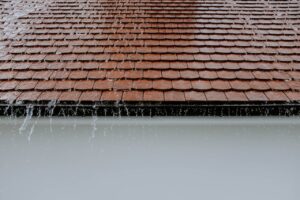
A properly installed, high-quality roof provides critical benefits for any home or commercial building. Let’s examine some of the key advantages in more detail:
Water Protection
The primary function of a roof is to act as the outer layer and shed water away from the building. Materials like asphalt shingles, standing seam metal, and slate form a waterproof barrier or roof surface to protect the roof decking and internal structure from moisture damage. Proper drainage and materials keep the interior dry.
Insulation & Energy Efficiency
The roof also provides important thermal insulation to reduce heating and cooling costs. Materials, ventilation, drip edge, synthetic roofing, underlayment, and proper installation by a roofing contractor all work together to optimize energy efficiency.
Structural Integrity
Quality roofing materials and proper installation help ensure long-term structural integrity. Preventing water penetration of roofing nails avoids rotting wood shakes, deterioration of the roof framing, and mold growth that can compromise stability.
Noise Reduction
Materials like insulated membranes and synthetic underlayments also provide sound-dampening benefits. This can reduce outside noise from traffic, weather, and other sources.
Storm Resistance
In hurricane and high wind zones, impact-resistant roofing materials like metal panels, composite shingles, and concrete tiles withstand extreme weather events. The roof remains intact against flying debris.
Fire Protection
Fire-rated roofing materials like Class A asphalt, metal, and tile protect the structure against wildfire damage. Proper installation also minimizes the risk of ember penetration.
Longevity & Durability
Quality materials installed properly can last for decades. This avoids frequent roof replacements and provides long-term stability and performance. Periodic roof maintenance helps extend the roof’s lifespan.
Curb Appeal
For many homes, the roof is a prominent architectural feature impacting curb appeal. Attractive materials for wood roofs like clay tiles, slate, and wood shakes enhance aesthetics and home value.
Sustainability
Many modern roofs feature eco-friendly benefits such as solar panels, green roofing, recycled materials, and cool roofing technologies that reduce environmental impact.
The Most Common Roofing Materials Used
There is a diverse array of types of roofing and materials on the market today, each with its advantages and drawbacks. Choosing the right materials for your new roof installation, roof replacement, or roof repair project is crucial to its performance, durability, and cost-effectiveness.
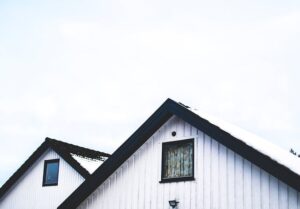
Asphalt Shingles
Asphalt shingles are the most commonly used residential roofing material in North America. They are composed of a fiberglass or organic felt mat, saturated with asphalt and covered with colored mineral granules. Asphalt shingle roofs provide an affordable roofing option for most homeowners. They come in architectural shingles, 3-tab shingles, and composite shingles.
Metal Roofing
Metal roofs like standing seam metal roofing have panels made from steel, aluminum, copper, or other metals. Metal roofs and standing seam metal roof sheets are lightweight, durable, and fire-resistant. Standing seam metal roofs and corrugated panels are popular metal roof styles. Metal shingles are also available.
Wood Shakes and Shingles
Wood roofing like cedar shakes and wood shingles lend a rustic aesthetic. However, natural wood roofing materials require frequent maintenance and have a shorter lifespan than other roofing materials.
Slate Roofing
Slate roofing tiles and slate shingles are extremely durable natural stones that can last over a century. Slate and tile roofs provide a beautiful traditional look but are more expensive.
Clay and Concrete Tiles
Concrete and ceramic roof tiles resemble clay or slate roofs in appearance but are less expensive. They have a long lifespan but can be heavy and prone to breakage, making repairs tricky.
Built-Up Roofing
Built-up roofs have layers of asphalt, tar, or other materials over the flat roof and decking, making them popular for flat commercial roofs. They require professional installation.
Single-ply Membranes
Flexible synthetic membranes from PVC, TPO, or EPDM create a waterproof barrier over flat and low-slope flat roofs only. These rolled roofing materials allow for quick installation, but seams must be carefully sealed.
Green Roofs
Green roofs have soil, plants, and other living materials installed over a waterproof membrane. Green roofs provide insulation and environmental benefits for commercial buildings and homes.
Cool Roofs
Cool roofs include reflective paints, metallic coatings, or shingles designed to reflect sunlight and absorb less heat. They help reduce energy costs in environments with excessive heat.
Other Roofing Materials
Some other roofing materials include wood shakes and shingles, solar panels, synthetic slate and roofing, concrete tiles, and clay tiles. The type of roof system, roof shape, climate conditions, and budget all factor into choosing the best roofing materials for the roofing project.
How to Choose the Right Roofing Material for Your Property
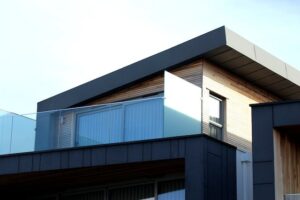
With so many roofing materials to pick from, it can be daunting to select the best option for your home or building. Keep the following criteria in mind when weighing your choices for most popular roofing materials:
Climate Conditions
Consider your area’s weather, temperature extremes, and precipitation amounts. For snowy climates, metal or slate roof can hold up well to heavy snow loads. In hot and sunny locales, cool roofing materials minimize heat absorption.
Roof Pitch and Slope
Steeply pitched roofs shed water easily, expanding material options. Low-slope roofs require specialized membranes or systems to avoid pooling water and leaks.
Cost and Budget
Look at both upfront installation cost and long-term value when budgeting for a new roof. Premium materials like slate and metal cost more but have a longer lifespan, while asphalt shingles provide an affordable option.
Appearance and Style
If boosting your home’s curb appeal is a priority, materials like wood shakes, concrete tile roofs, or standing seam metal can enhance aesthetics. For modern homes, metal panels create a sleek look.
Fire and Wind Resistance
Homes in wildfire zones need Class A fire-rated asphalt, metal, clay, or slate roofing. In hurricane regions, impact-resistant materials like composites or metal withstand high winds.
Weight Considerations
Heavy materials like slate, clay tile roofs, and concrete tax structural load capacity. Lightweight standing seam metal is ideal for buildings unable to support extreme weight.
Sustainability and Energy Efficiency
Today’s cool roofs, photovoltaic systems, recycled composites, and green roofing provide eco-friendly benefits. Consider sustainability in your selection process.
Ease of Maintenance
Some materials like metal and synthetic rubber membranes require little upkeep. Wood shakes need frequent sealing and treatment. Assess how much maintenance you can realistically do.
By carefully weighing all these criteria against your needs, preferences, and budget, you can make an informed roofing material decision for maximum satisfaction. If in doubt, consult a professional roofer for personalized recommendations.
Get Your Roofing Needs with Us
At My Quality Construction, we are roofing specialists dedicated to providing excellent service and quality materials to homeowners in Sterling Heights and Warren, MI. Whether you need a routine roof inspection, repair, replacement, or a new installation, we have the expertise to tackle any roofing project.
Our skilled roofing contractors have experience with all major roofing systems and materials on the market. We will assess your current roof, identify any underlying issues, and advise you on the best solutions based on your roof type, climate, and objectives. With access to top roofing product manufacturers, we can source and install premium shingles, metal panels, membranes, and more.
More Than Just Roofing
In addition to standard and asphalt shingle roof replacement, we excel in specialized services like slate and tile repair, copper work, commercial single-ply installation, and insurance storm damage roofing. Our focus is on comprehensive solutions, not quick band-aid fixes. We ensure your new roof is optimally designed, properly ventilated, and protected by high-quality underlayments.
At My Quality Construction, we know how critical your roof is for safeguarding your most valuable asset – your home. You can trust our roofing crews to show up on time, work efficiently, and clean up the job site when finished. We will monitor weather conditions to avoid moisture damage and proactively communicate during the roofing process.
Don’t leave your roof in the hands of inexperienced contractors. For proven expertise from a local professional roofer you can count on, choose My Quality Construction.
Contact us today for a free estimate! We look forward to helping solve your roofing needs.

